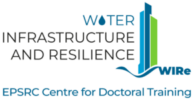Find out more about what our researchers have been up to: conference presentations, workshops, and more
Emily Jane Blackburn presents at the Environmental Biotechnology Innovation Centre workshop: Environmental biotechnology for the management of PFAS and beyond
Emily Jane Blackburn (Cohort VI) attended the workshop in June 2025, and delivered an Early Career Researcher flash talk titled 'Statistical analysis of PFAS and catchment characteristics in the UK', which touched on topics from her PhD project 'Understanding risks from emerging contaminants PFAS to surface water resources'. The workshop included a range of talks from PFAS researchers and experts. Emily's talk came second overall in the ECR talk rankings - congratulations!
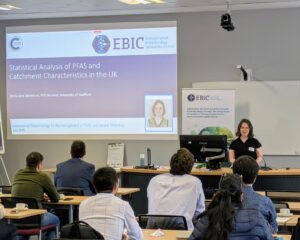

WIRe staff and PhD students attend IAHR SimHydro 2025 in Nice, France
In June 2025, Kaeli Brazier (Cohort IV), Alan Smalley (Cohort III) and James Shucksmith (WIRe co-director) attended the IAHR SimHydro 2025 conference in Nice. James and Kaeli delivered a presentation titled ‘Experimental study of the transport and deposition of sewer sediments from pipe systems to surface flows via manholes during urban flooding events’, and Alan gave a talk titled ‘Implementing a machine learning approach for predicting Cryptosporidium river concentrations to assist operational water resource decisions on the River Thames’.
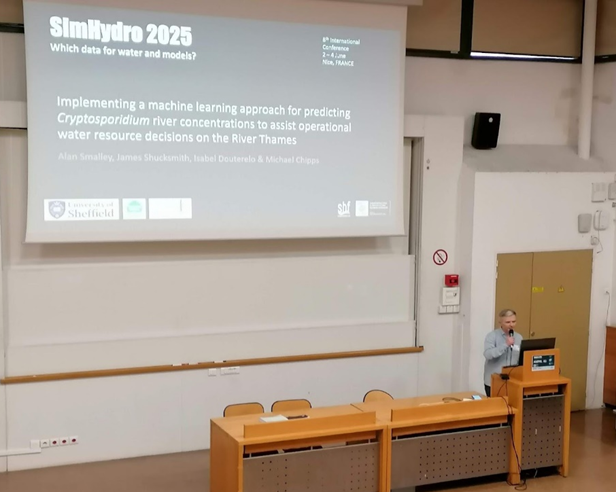
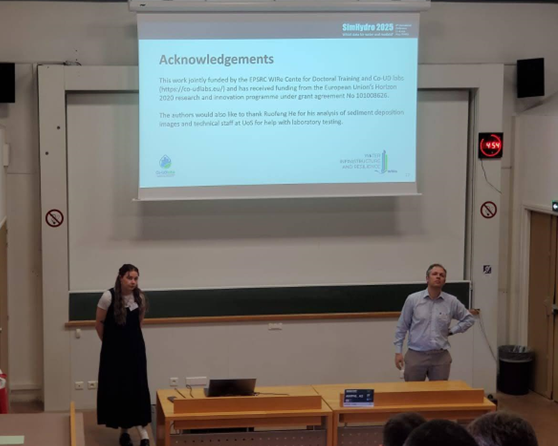
WIRe PhD students attend the IWA Resource Recovery Conference in the Netherlands
Rachael Giles (Cohort V), Siqi Xu, and Mark Powders (both Cohort III) attended the IWA Resource Recovery Conference in Leeuwarden, the Netherlands, in May 2025. They each had the opportunity to present about their research, and the conference included several workshops on resource recovery and tours of water treatment works.
Rachael presented a poster on her work, titled ‘Biological coagulant recovery: a novel method to increase resilience and sustainability in drinking water and wastewater treatment processes'. Siqi also presented a poster, titled ‘Exploring the effect of variability in sewage sludge characterisation on pyrolysis outputs’. Mark gave a presentation on his work, which was titled ‘Low-energy thermal stripping to recover quality ammonia for the water sector’.
The conference was a great opportunity for the WIRe students to have meaningful conversations with others in the same field, and to see the potential impact of their work!
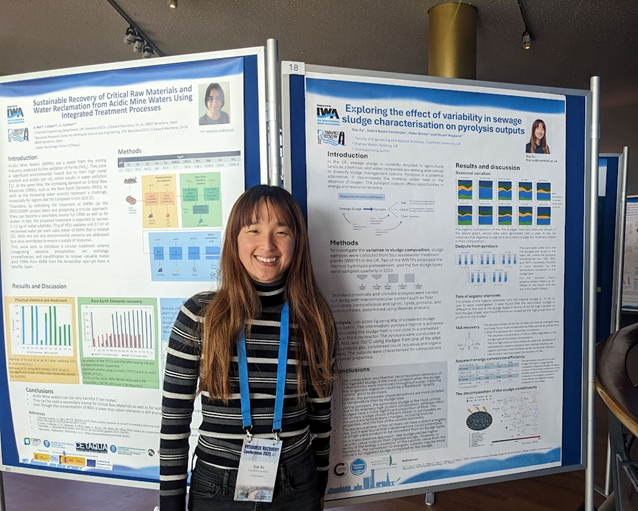
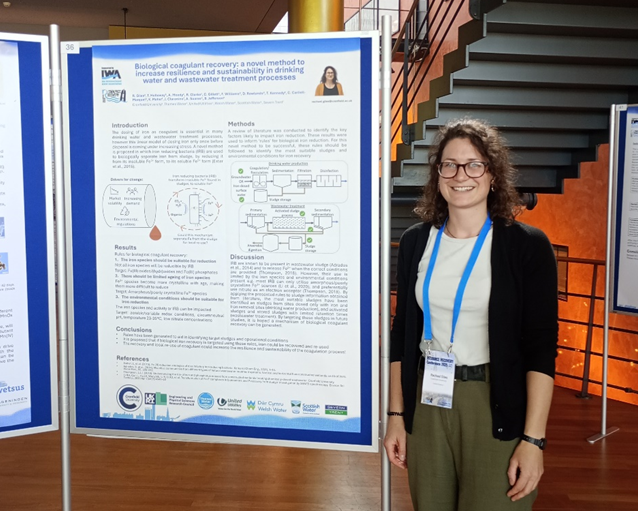
Pinelopi Savvidou presents at the SETAC Europe 35th Annual Meeting
Pinelopi Savvidou (Cohort III) attended the SETAC Europe 35th Annual Meeting in Vienna, Austria, in May 2025. She presented part of her PhD research, with a presentation titled “Predicting the Fate of 40 Emerging Contaminants: A Case Study of SimpleTreat and TOXCHEM”, which provided insights on whether current fate and transport models for organic contaminants and sewage treatment works are fit for purpose.

Matthew Pitt presents at EGU25 in Vienna
Matthew Pitt (Cohort III) had a great time at EGU25 presenting his research as a poster titled: “Understanding seasonal variability in shrink-swell clay soils and the impact on parameterisation of soil-water mass transfer models” assessing the difficulties of the field soils he researches as part of his wider PhD project and representing them in a valid manner within mass transfer models.
As a final year PhD student, Matthew found it was helpful to discuss his research with other world-leading academics to understand the sorts of questions he could face for his Viva and beyond.
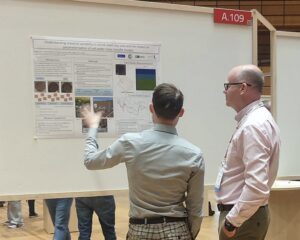
Siqi Xu presents a poster at the UK Carbon Capture and Storage Research Centre Research Community Spring Conference 2025
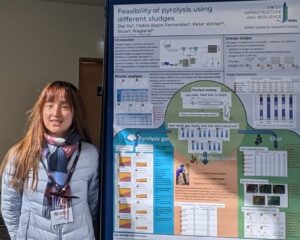
Siqi Xu from Cohort III presented a poster titled 'Feasibility of pyrolysis using different sludges' at the UK Carbon Capture and Storage Research Centre Research Community Spring Conference in Glasgow, 24-25 March 2025. During the conference she had the opportunity to meet and discuss with researchers from other institutions on the carbon sequestration potential of biochar and thermal chemical processes.
WIRe researchers attend the IWA World Water Congress & Exhibition 2024
Six CDT WIRe researchers, Polly Grundy, Ravina Bains, Edward John, Matthew MacRorie, Ali Leonard and Anna Laino participated in the recently held IWA World Water Congress and Exhibition in Toronto. Matthew and Edward presented on their PhD research at the conference while Polly, Ali and Ravina had poster presentations. Polly won the best poster prize in the drinking water theme!

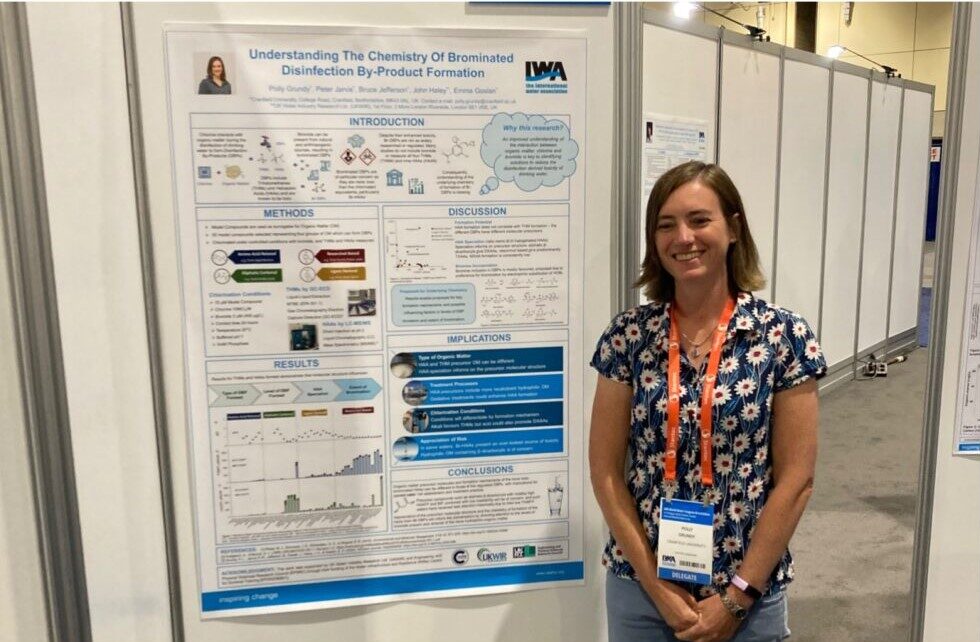
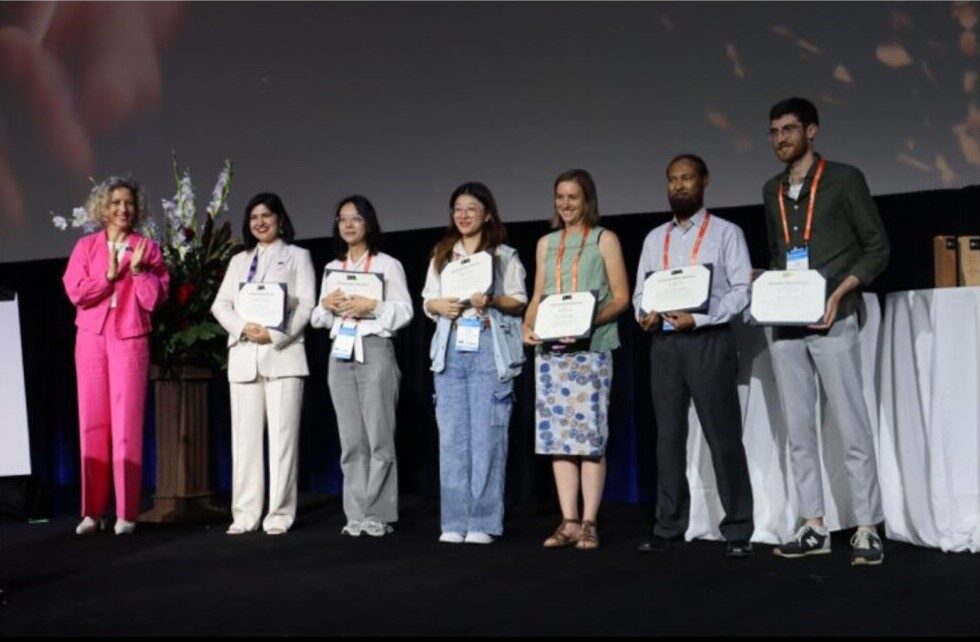

Polly Grundy attends a Royal Society of Chemistry One Day Meeting
Polly Grundy from Cohort III attended a one day meeting held by the Royal Society of Chemistry on ‘How to deal with the issues of emerging contaminants of concern in the aquatic environment’. The meeting focused on industry perspective, regulatory issues and the monitoring of these emerging contaminants. It included presentations from experts in the field on the different types of contaminants such as pharmaceuticals and personal care products, antibiotics, veterinary medicines, plant protection products, Per- and Poly-fluorinated Substances (PFAS) and microplastics present in our water bodies.
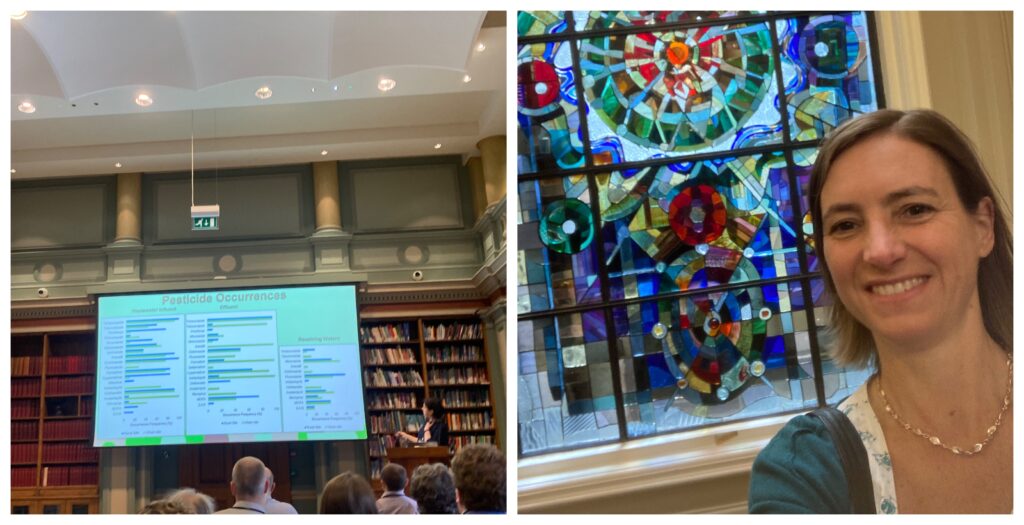
Philippa Mohan and Kaeli Brazier present at the International Conference on Urban Drainage
Philippa Mohan from Cohort II and Kaeli Brazier from cohort IV presented their research work at the International Conference on Urban Drainage, held from 9-14 June 2024 at Delft University of Technology, Netherlands.
The conference was held in collaboration with the International Water Association and the International Association for Hydraulic Research through the Joint Committee Urban Drainage.

Anna Christy attends an input-output modelling course at Leiden University
Anna Christy (Cohort III) from Newcastle University attended an Input-Output modelling course at Leiden University held from 14-19 January 2024. She was also invited to give a seminar on her research for their Industrial Ecology group on 6 March 2024.
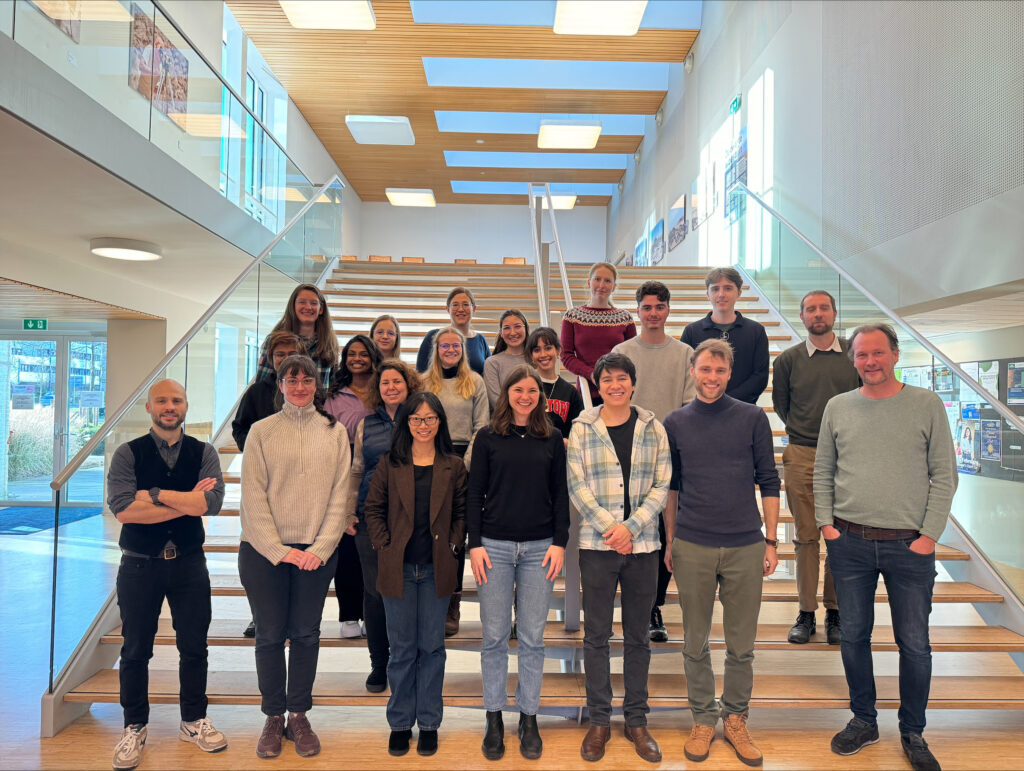
Ravina Bains participates in IWA ASPIRE and UKWIR 4th Annual Conferences
In October 2023 Ravina Bains from Cohort II of CDT WIRe participated in the 9th IWA-ASPIRE conference held in Taiwan with the theme ‘One Water for Smart Cities’. At the conference, she presented on ‘Investigating the Impacts of Wastewater Final Effluent on Electrolysis for Hydrogen Production’.
In November 2023 Ravina also participated in the UKWIR 4th Annual Conference held in London where she presented a poster on ‘The Role of Hydrogen for a Resilient and Low Emissions UK Water Sector’. The theme of the conference was ‘Positively influencing the water sector through research and innovation’.

Anne Kamau presents a poster, and Daniel Ruth and Samuel Yeboah Nyarko deliver talks at the IWA 8th International Water Association Specialist Conference on Natural Organic Matter
In December 2023 the 8th International Water Association Conference on Natural Organic Matter (NOM8) took place at UNISA, South Africa. The conference provided a platform for researchers and experts to delve into the intricate world of natural organic matter (NOM) in water systems.
CDT WIRe’s Anne Kamau (Cohort IV) presented a poster, titled 'Formation of nitrogenous disinfection by-products in drinking water', aimed to contribute valuable insights into the role that NOM plays in influencing the formation of these disinfection by-products. The presentation highlighted innovative research methodologies, including advanced analytical techniques and state-of-the-art instrumentation, to comprehensively analyse the composition and behaviour of organic matter in various water environments. She addressed key challenges in understanding organic matter dynamics, such as its sources, transformation processes, and impacts on water quality.
Samuel Yeboah Nyarko (Cohort III), delivered a presentation on ‘Natural Organic Matter Removal by Coagulation and Ion-exchange in Lowland Surface Water Treatment: Impact on Treatment and Operational Benefits’. During his presentation, Samuel discussed how pH, hydrophobicity, and molecular weight aid in understanding NOM removal by coagulation and ion-exchange processes, particularly in water sources with high alkalinity and hydrophilic DOC content.
Daniel Ruth (Cohort I) also presented at the NOM8. His talk was titled 'NOM compositional impacts on coagulant demand and water treatability'.
Attendees had the opportunity to engage in meaningful discussions, exchange ideas, and explore potential collaborations with fellow researchers and industry professionals. The overall experience at the conference provided a unique platform for networking, learning about cutting-edge research in the field, and fostering collaborations that will contribute to advancing our collective understanding of natural organic matter in water systems.
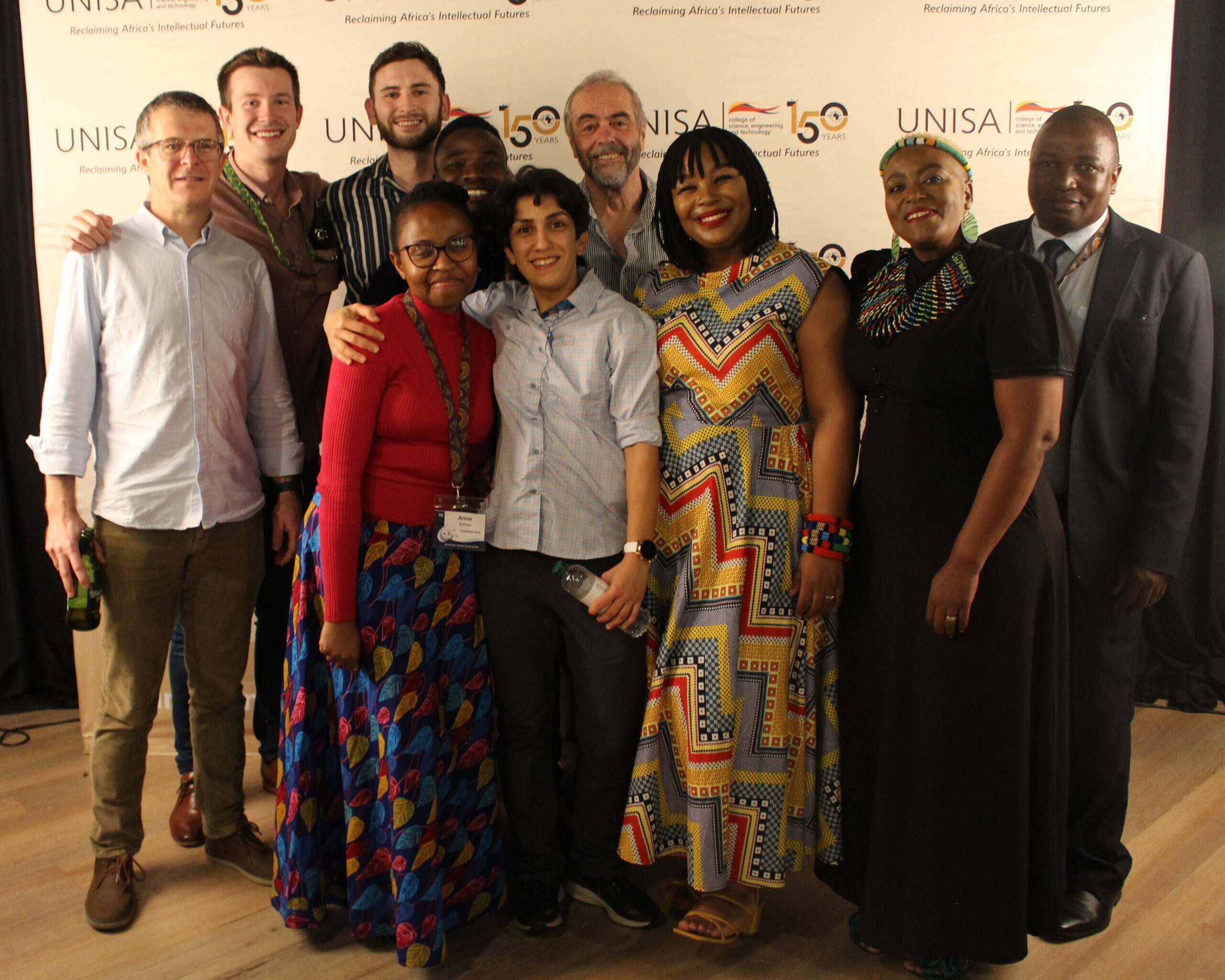
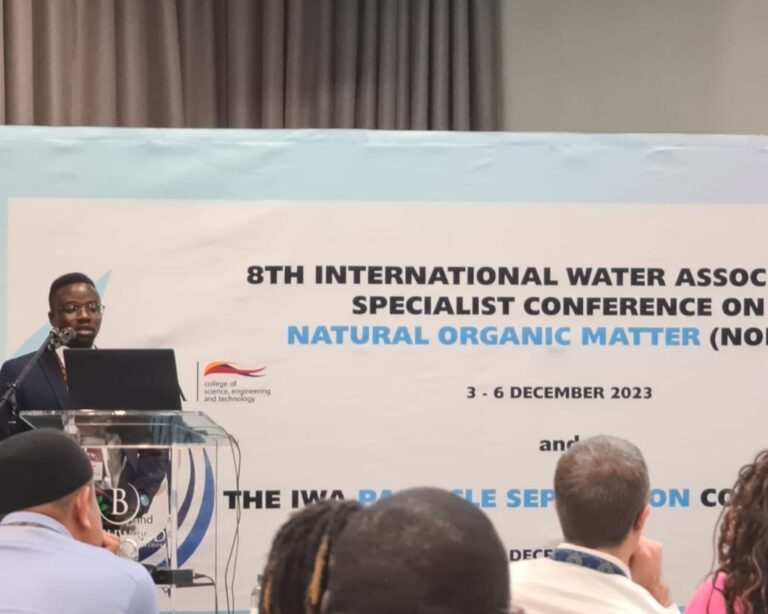
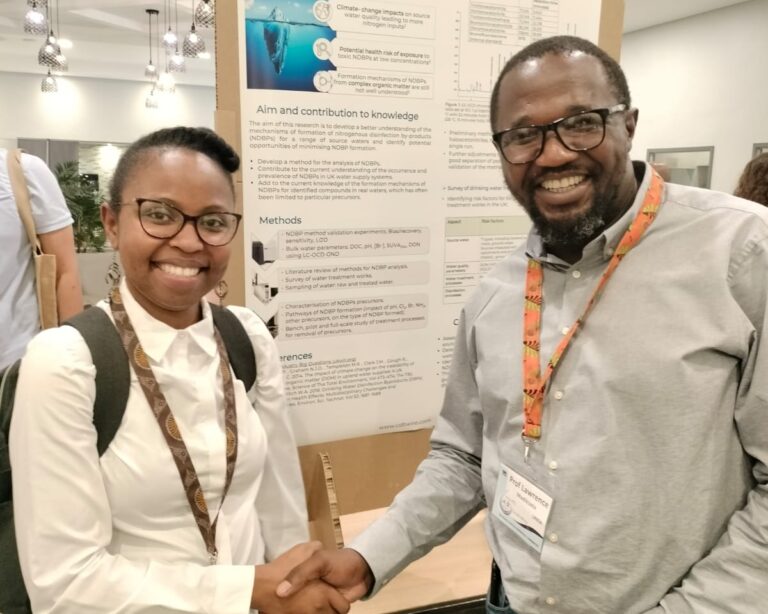
Isabel Carneiro and Ishara Perera visit Newcastle University
Isabel Carneiro Cardoso da Silva (Cohort III) and Ishara Perera (Cohort IV) from University of Sheffield (UoS) attended an MSc module on Geographic Information Systems led by Dr Craig Robson, Lecturer in Data-centric Civil (and Geospatial) Engineering at Newcastle University. Isabel and Ishara both identified this module as highly relevant to their projects. This module has proved very popular throughout the WIRe Programme, with previous students attending from UoS and Cranfield in the past. The team at Newcastle arranged a catch-up and lunch session for Isabel and Ishara along with the other WIRe students at the university.


Edward John wins the prestigious Peter Watson Prize for Young Engineers
Edward John (Cohort II) won the Peter Watson Prize for young engineers in December 2023 for his presentation on “Proactive pipe management: Multiaxial fatigue of water pipe grey cast iron”. The event was hosted and organised by the Engineering Integrity Society (EIS). Speaking after receiving the award, Edward said, “The award has definitely given me a confidence boost for future presentations and it is nice to have my research recognised in this way.”
Read a short interview with Edward here.

Philippa Mohan participates in the CIWEM Urban Drainage Group Conference
In December 2023 CDT WIRe’s Philippa Mohan (Cohort II) presented on a risk based tool that accounts for uncertainty in water quality studies at the CIWEM Urban Drainage Group event in Birmingham, UK. In her talk, titled 'A Risk-based Tool That Accounts for Uncertainty in Water Quality Studies' she talked about how uncertainty in the data we use to monitor discharges of sewage into rivers can alter the understanding of if harm has occurred or not.

CDT WIRe Researchers at the UKWIR 4th Annual Conference
CDT WIRe students Polly Grundy (Cohort III), Ali Leonard (Cohort II), Alethea Goddard (Cohort I), Ravina Bains (Cohort II), Killian Gleeson (Cohort I), Jade Rogers (Cohort II), Anne Kamau (Cohort IV), Thomas Langshaw (Cohort II), Edward John (Cohort II), Dimitris Athanasopoulos-Tseles (Cohort I), Harry Nicklin (Cohort II) and Anna Laino (Cohort II), along with other colleagues, attended the UKWIR 4th Annual Conference held in London in November 2023. The aim of the conference was to bring people together to promote inspiration and innovation in the water sector.
The WIRe students contributed by presenting their work as posters and taking time in the breaks between sessions to discuss their research with fellow conference attendees from across the water industry.
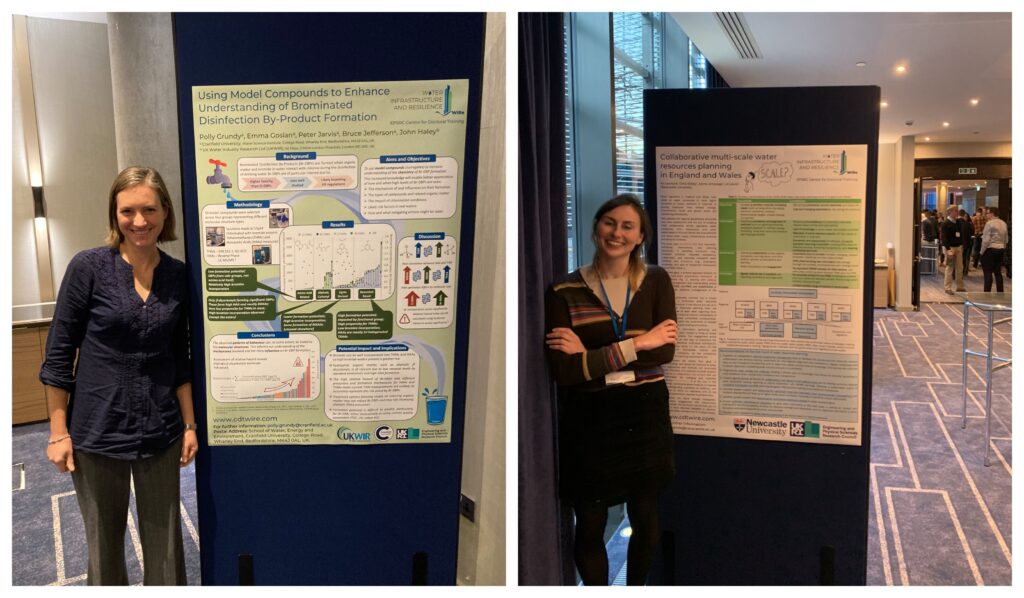
CDT WIRe Students at Summer Challenge Week 2023
Organised by the University of Sheffield, the week challenged the students to think out of the box and participate in outreach activities that involved engaging school children in educational, yet interesting water related games. The aim of this year’s challenge was to enhance the social skills of the students, their ability to break down complex water engineering concepts and make them interesting and engaging to school children.
An important part of the week was the one-day conference. The day started with a presentation on research impact from Tony Conway, Visiting Professor at University of Sheffield followed by full presentations by cohort I researchers and alternated by three-minute poster pitches by cohort II students.
Congratulations to Lucie Bertolaso for winning the Best WIRe poster and to Jade Rogers and Daniel Ruth for winning the Best Three Minute Poster pitch and the Best WIRe Presentation prizes, respectively. Jennifer Hollands from cohort IV was presented with the Best Student in the Induction Semester prize at the end of the conference. Well done all!
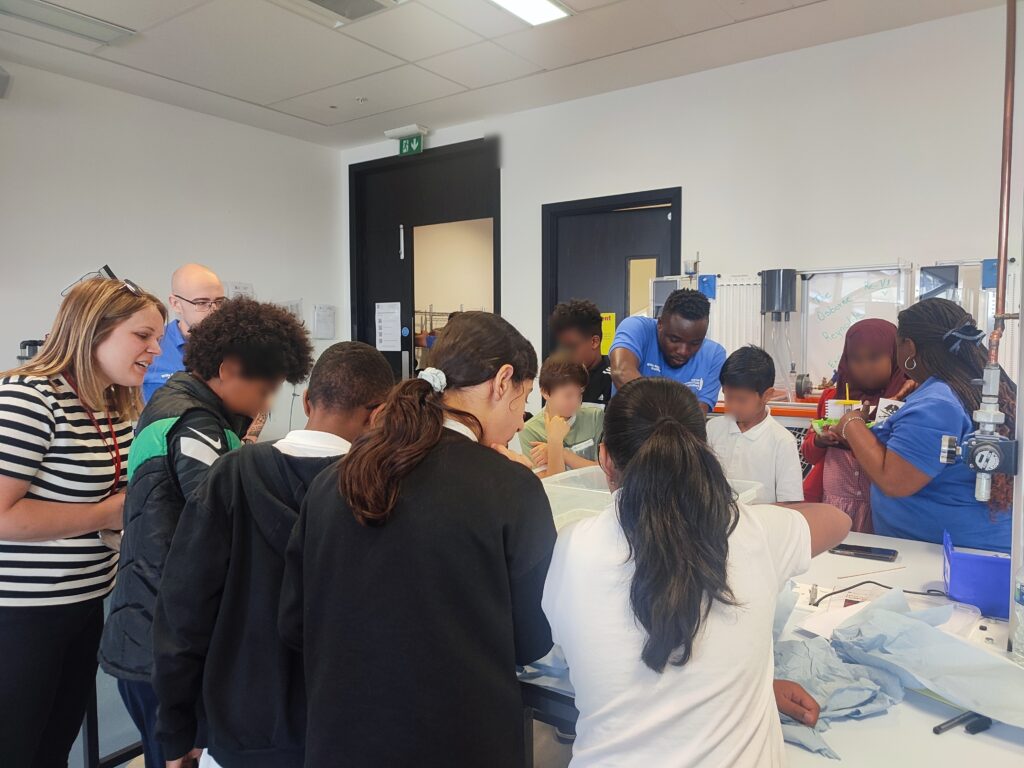
For the outreach event with the school students, two groups of WIRe students went to The Diamond, that houses exceptional equipment, labs and study spaces while two groups were placed at The Integrated Civil and Infrastructure Research Centre (ICAIR), to interact with the children. The students at the Diamond engaged with thirty 9–10-year-olds from Porter Croft Academy and those at ICAIR engaged with twenty-three 13-14-year-olds from Yewlands Academy.
The students at The Diamond presented four different activities. One was about how water is supplied to cities, which they showcased through an interactive game of understanding the cost of water supply vs cost of bottled water and by using different sized pipes to depict water flow, and how that affects the flow of water to each city. The second showed the ways in which water buoyancy is managed through an exciting and competitive game of pirates, boats and marbles as weights.
The third highlighted the use of water movement to generate energy, using a mini turbine to show the effect of water movement on the spinning of the turbine. Students talked about their experience of visiting a windmill on a school trip and asked them to compare what they’d seen previously to a turbine they were shown. They also used a handheld windmill, looked at the shape of the curves and asked them to suggest why they were shaped that way. They had a mini quiz that asked them some fundamental questions of hydropower and explained key terms that were probably new such as kinetic energy = movement energy. This proved to be the most challenging one for the students.
The final activity talked about water flows, using rubber ducks. The school children decorated their ducks in any way they liked and using a flow meter, tested to see if their duck flowed fastest from one end to the other. This was the most fun game for the students as they could interact with all the elements involved and make a race out of it.
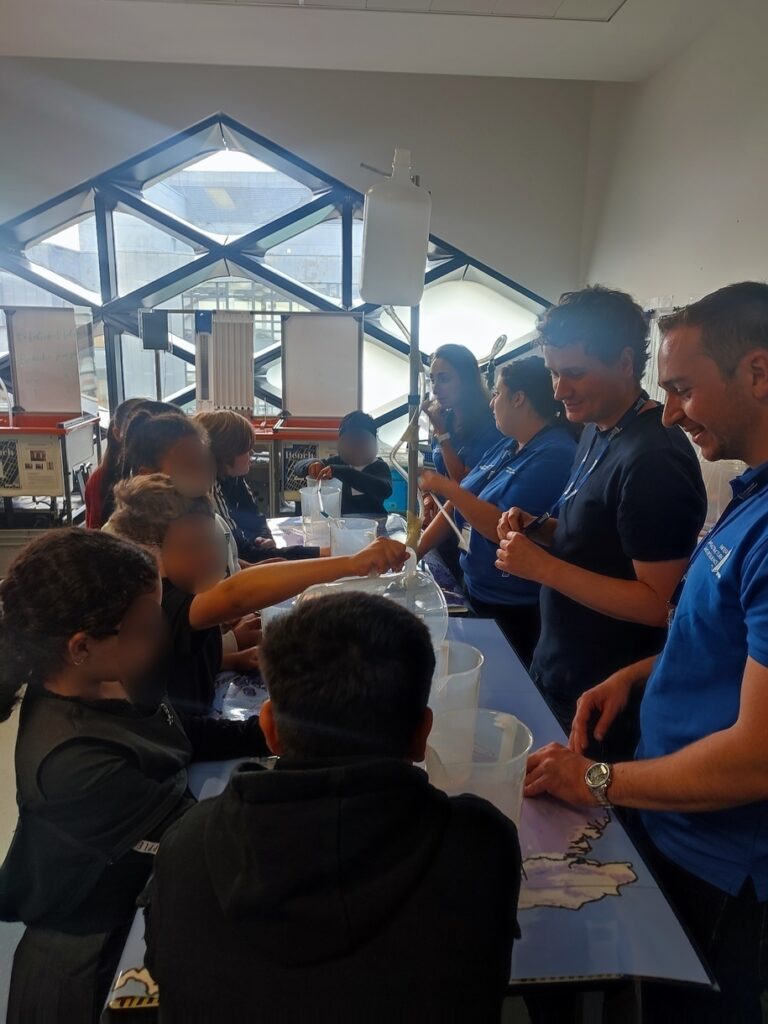
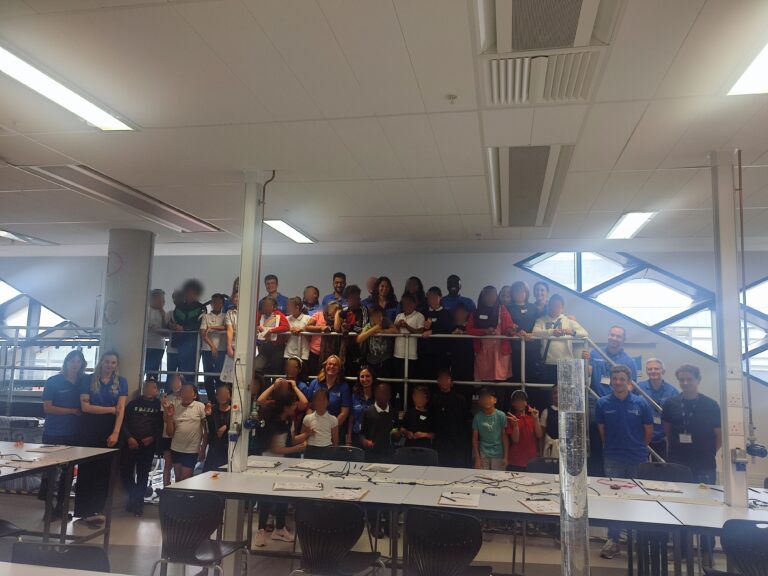
At ICAIR, the students conducted four main activities. In the first activity, the pupils learnt how to investigate sewage pipes using the full-scale sewer pipe testing facility to create replica blockages (to represent things like wet wipes, fat bergs in real life) and then sent water down at various speeds (to represent normal or storm flows) with rubber ducks floating in it and timed how long they took to get through. They used CCTV cameras to identify items in pipes and then discussed on which of those items are likely to block sewers.
The second activity was to look at water distribution networks using the smaller scale water pipe test facility to understand flows through pipes and the forces involved in a typical water distribution network, ensuring that each ‘tank’ / house received an equal amount of water.
The third activity was about investigating blockages, a follow-up on the sewer blockage activity, where the students dropped rubber ducks of various sizes into the pipes to see which would arrive first at the end of the test cell. There was a discussion on blockages and fatbergs and impact on sewer systems post the activity.
The final activity was about water flow monitoring where a desktop pipe network was used to simulate what would happen if there was a pipe leakage. The students were able to use simple formula to calculate how much water was lost to a leaking pipe after a given time.
After the activities the schools shared adorable thank you cards with the WIRe students, expressing their enthusiasm for the activities organised as well as the pizza that the team got them for lunch!
The WIRe students reflected on their key takeaways from the outreach activity, what they learnt from the experience of explaining the science behind their activities to school children.
The Summer Challenge Week was a stimulating time for the WIRe students to step out of their comfort zone and engage in activities that they normally do not, as part of their PhD. Well done all, you did a great job!
We look forward to another exciting Summer Challenge Week next year!
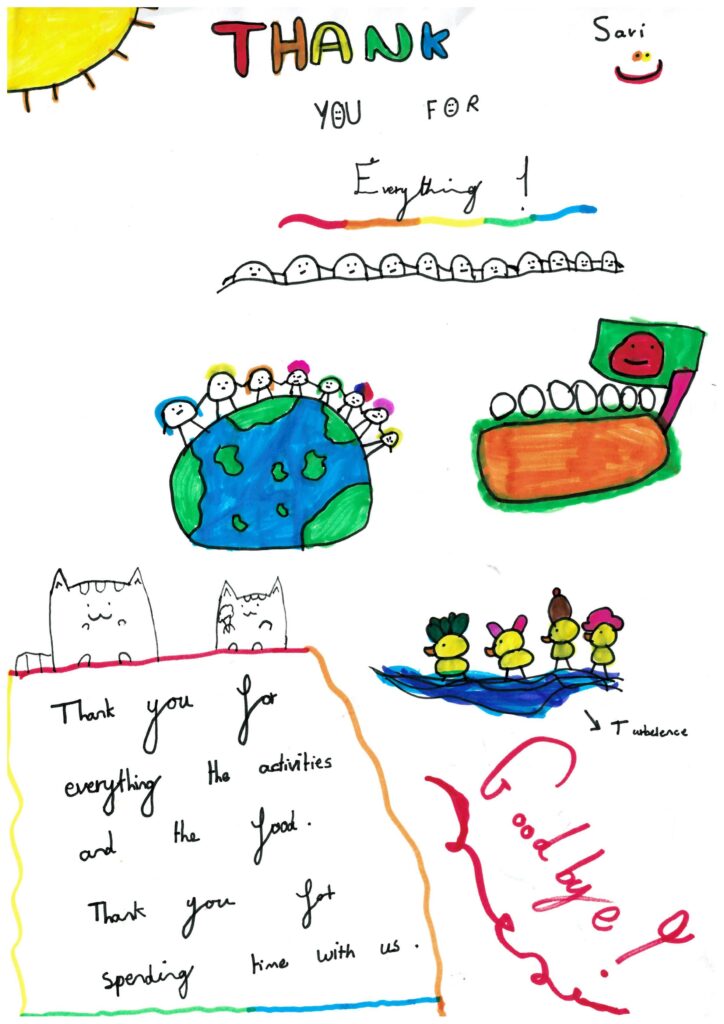

Anna Laino Participates in the 8th IWA WRRmod Conference
Anna Laino from Cohort II of the WIRe CDT presented a poster on ‘Quantification of wastewater resilience metrics’ at the 8th IWA Water Resource Recovery Modelling Conference held in Stellenbosch, South Africa from 18-22 January 2023.

WIRe Researcher Matthew MacRorie Conducts Research in Lahan, Nepal
Matthew MacRorie, CDT WIRe researcher in Cohort II, spent over three months in Lahan, a small city in Nepal, along the South-East border with India. Lahan is the focus of The Beacon Project, a collaboration between Anglian Water, WaterAid Nepal and the government water utility Nepal Water Supply Corporation (NWSC) to improve the water and sanitation situation in the city.
As part of the visit, Matthew and Beacon project partners, conducted 60 household surveys to understand their experience with piped water supply, how they adapt to the intermittency of the piped water and the ways in which they would like the water supply to improve. Along with the surveys, the team also installed smart water meters in the households to record water usage every minute and used a SIM card to transfer that data to a web-based platform to track water usage from the UK. The combination of the smart meters and surveys allows for a greater understanding of the variation in water access within an intermittent water supply network and the challenges of transitioning to a continuous supply system.
Matthew also had the opportunity to trek around the Manaslu circuit and visit Pokhara and Surkhet.
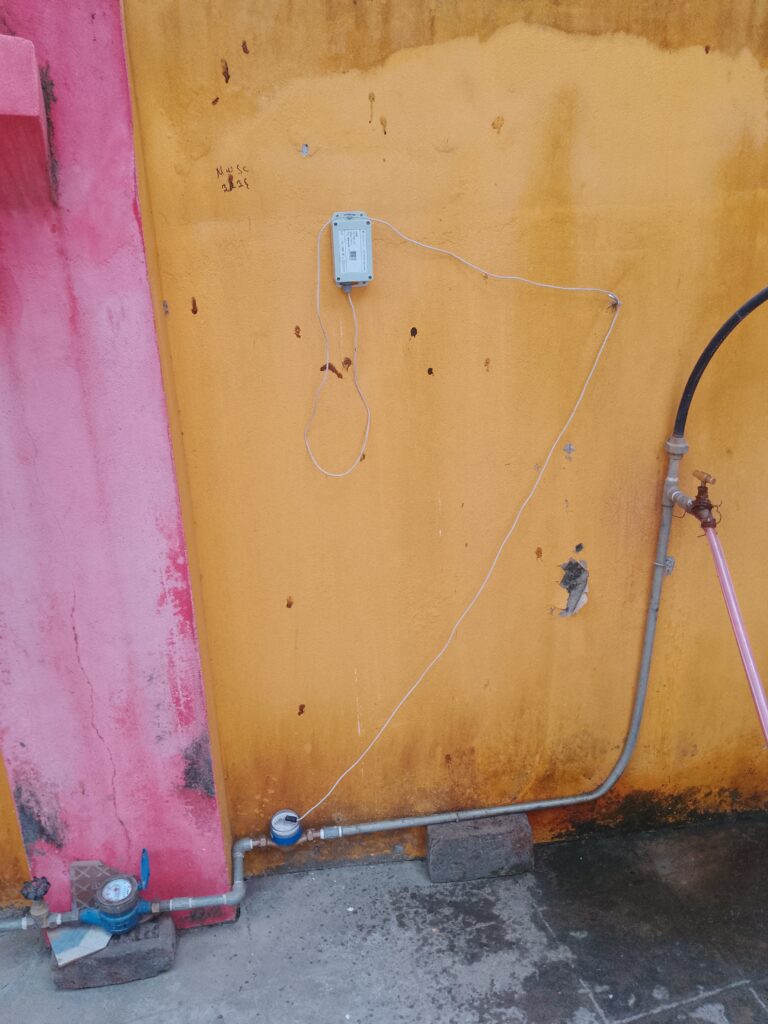

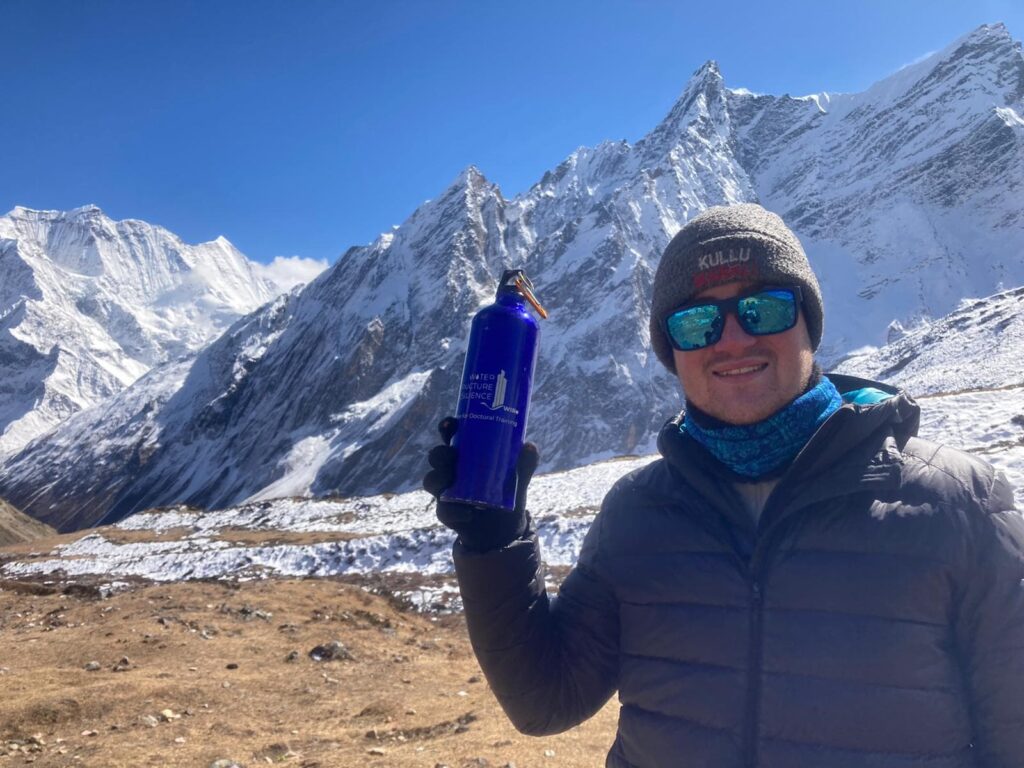
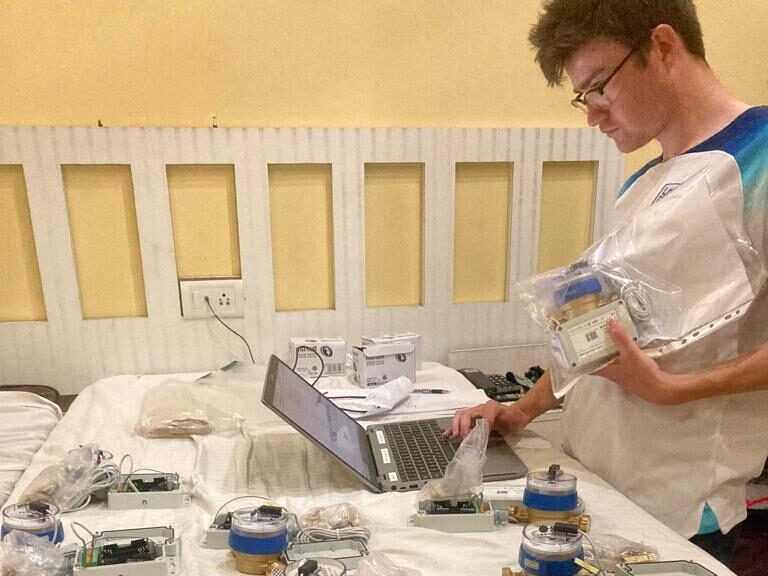
Peter Jarvis and Daniel Ruth participate in the 2022 Water Quality Technology Conference
Peter Jarvis, WIRe director, and Daniel Ruth (Cohort I) participated in the 2022 Water Quality Technology Conference, organised by the American Water Works Association.
At the conference, Peter was a speaker at a session on ‘Impact of Reduced Regeneration Frequency on the Ion Exchange Equilibrium for Removal of Organic Matter and Inorganic Ions’ while Daniel was part of the session on ‘Monitoring the Right Parameters for the Enhanced Treatment of Natural Organic Matter Laden Water Sources’.

CDT WIRe Cohort I Researchers Attend A Scientific Writing Training and Retreat
CDT WIRe’s first cohort participated in a week-long scientific writing training and retreat. The retreat aimed to help the students understand the need for scientific writing; learn more about the publication process; strategies and techniques to writing; barriers to scientific writing and how to overcome them; and also, to learn from their peers.
During the week, they attended sessions on ‘My approach to writing’ by Jerry Knox from Cranfield University and Fran Pick from the University of Sheffield. The students brought a piece of their research work to the retreat (data set, non-started or an ongoing paper) and worked on it using their learnings from the retreat. They also had the opportunity to peer reviewed each others' work.

Harry Nicklin Wins Best Poster Presentation Award at the EBNET Early Career People in Water Conference
CDT WIRe researcher Harry Nicklin (Cohort II), from Cranfield University, won the best poster presentation award at the EBNET Early Career People in Water Conference held at Cranfield University recently. Harry’s presentation was on ‘Understanding domestic water use behaviour using smart sensor-based behavioural interventions.’
Pinelopi Savvidou (Cohort III) also won the best poster award at the conference.
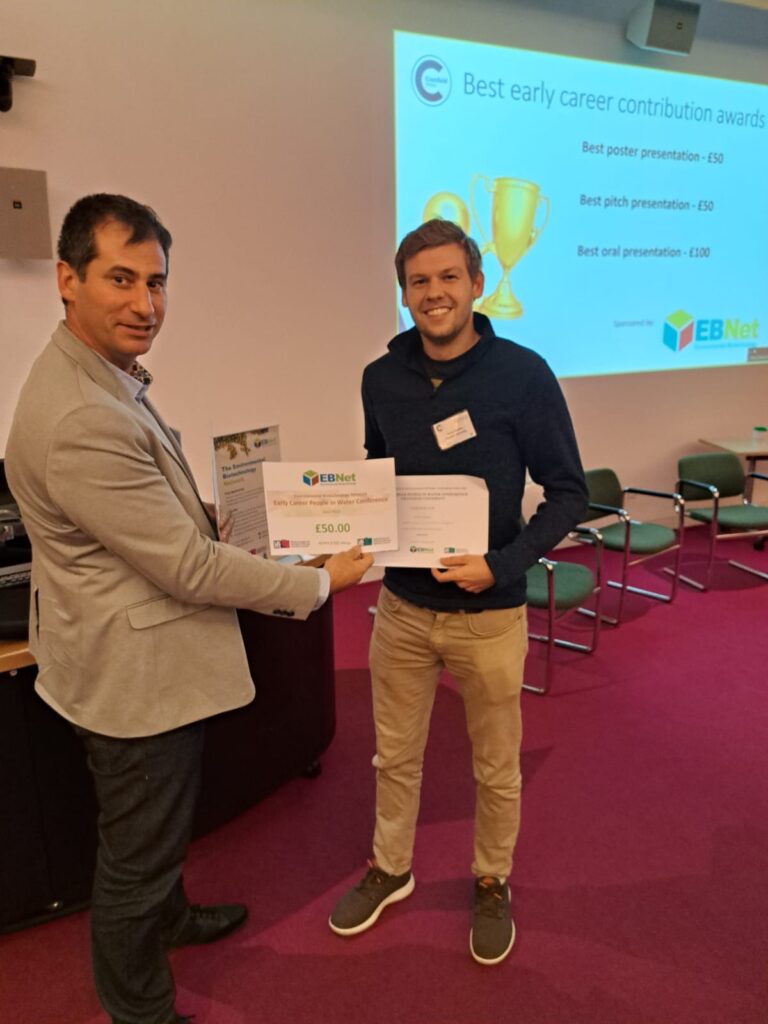
WIRe researchers attend WDSA-CCWI Conference 2022, Valencia, Spain
CDT WIRe researchers Jade Rogers, Reinar Lokk, Edward John and Matthew MacRorie (all Cohort II) from University of Sheffield presented their research from their PhDs at the WDSA-CCWI Conference held in Valencia.
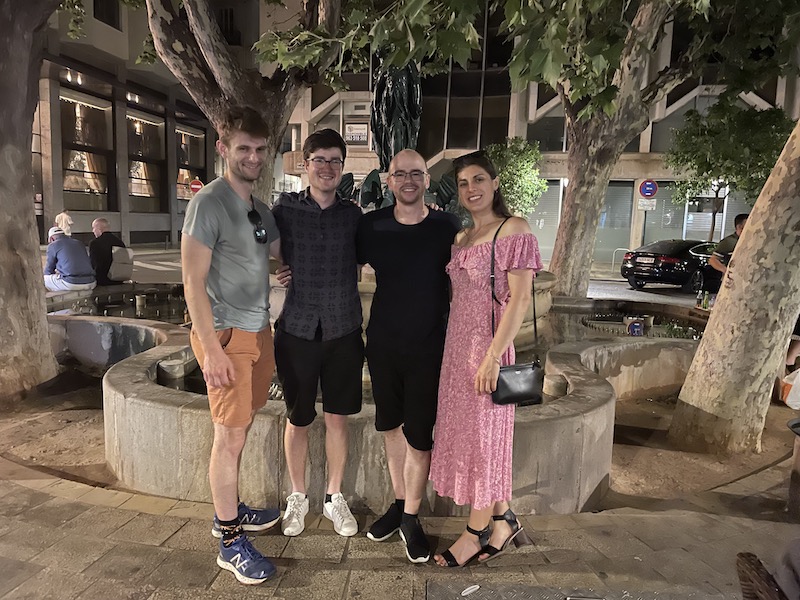
Copyright © 2025 CDT WIRe | Powered by StartKit
